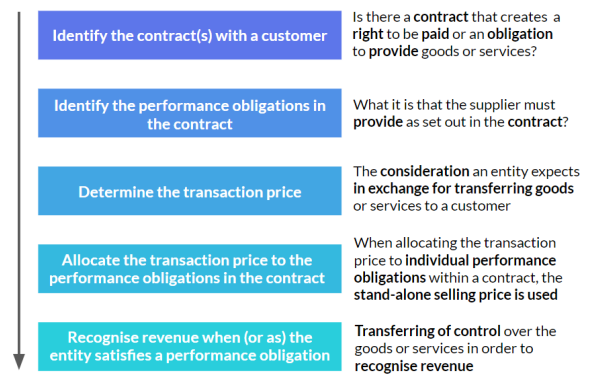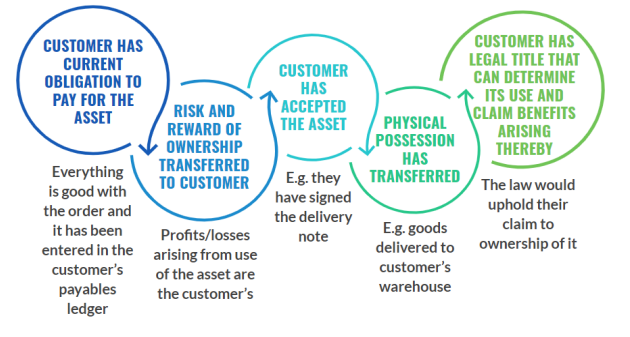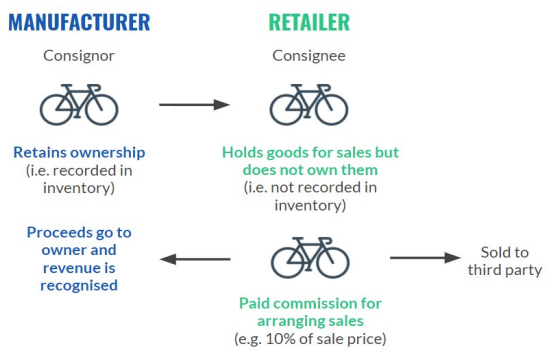Chapter 4 - IFRS 15 Revenue
1/30
There's no tags or description
Looks like no tags are added yet.
Name | Mastery | Learn | Test | Matching | Spaced |
|---|
No study sessions yet.
31 Terms
Objective of IFRS 15
To establish the principles that an entity shall apply to report useful information to users of financial statements about the nature, amount, timing and uncertainty of revenue and cash flows arising from a contract with a customer
Revenue
Income arising in the course of an entity’s ordinary activities
Contract
An agreement between two or more parties that creates enforceable rights and obligations
Customer
A party that has contracted with an entity to obtain goods or services that are an output of the entity’s ordinary activities in exchange for consideration
Exemptions to IFRS 15
Any lease contracts - IFRS 16
Any insurance contrtact IFRS 17
Any financial instruments or contractual rights or obligations covered by IFRS 9 (Financial instruments), IFRS 11 (Joint arrangements), IAS 27 (Separate financial statements) and IAS 28 (Investments in associates and joint ventures)
same line of business agree to exchange non-monetary items
5 steps to determine revenue recognition

Identify the contract(s) with a customer
t must have approved the contract and must be committed to performing their respective obligation
o identify each party’s rights regarding the transfer of goods or services
payment terms for the goods or services must be identifiable
have commercial substance
probable that an entity will receive the consideration that it is owed
Identify the performance obligations in the contract
“A promise in a contract with a customer to transfer to the customer either:
• A good or service (or bundle of goods or services) that is distinct; or
• A series of distinct goods or services that are substantially the same and that have the same pattern of transfer to the customer.”
Determine the transaction price
The amount of consideration to which an entity expects to be entitled in exchange for transferring promised goods or services to a customer
Variable consideration
any amount promised as part of a contract which includes a variable amount.
only be included as part of the transaction price of a contract if it is highly probable that these sums will be realised
Financing components
whether this price will be impacted by the time value of money
consider the following when assessing if a contract contains a financing component:
• The difference, (if one exists), between the promised consideration and the cash selling price of the goods or services
• The effects of a combination of:
-The length of time between the transfer of goods or services to a customer and the payment for said goods or services and;
-The prevailing interest rates in the relevant market
Non-cash consideration
must be measured at fair value. If this fair value isn’t attainable
the price at which goods or services are sold to a customer on a separate basis
Consideration payable to a customer
remove these amounts from their original transaction price, reducing the revenue they would recognise in their financial statements
Allocate the transaction price to performance obligations in the contract
When allocating the transaction price to individual performance obligations within a contract, the stand-alone selling price is used.
Performance obligations satisfied at a point in time

Performance obligations satisfied over time
Customers simultaneously receive and consume the benefits that an entity provides, as these are provided.
if another party would not be needed to re perform the work already carried out by the original contracted company as part of taking on the original performance obligation.
IFRS 15: 4 Steps
Is the contract profitable?
Measuring Progress
Income statement
Statement of financial position
Is the contract Profitable?
whether or not the contract itself is profitable
we will look at this IF profit is expected or lossess- and if this cannot be measured reliably no profit is recognised and is shown as a net 0 on the P&L.
Measuring Progress
simply means to measure how much of the project has been completed so far.
Using Input and Output methods - using accounting concepts like prudence and accruals/matching concept.
Income statement
This is where we need to recognise revenue and expenses related to the contract – specifically sales, cost of sales and profits (or losses).
Sales revenue
measured with reasonable certainty, sales value of work completed is included as part of revenue.
Cost of sales (COS)
y deducting the period’s profit from the period’s sales value.
Expected contract losses - recognised immediately, added to the period’s cost of sales
Uncertain outcomes - the costs incurred in the year should be recorded and a matching amount recorded as revenue (as long as the company are confident they will be able to recoup the costs in the future).
Contract profits
sales less cost of sales, as calculated by using % stage of completion. profits which have been recognised in previous years of the contract, deducted from the total profits to date.
Expected contract losses
revenues and costs are allocated in relation to the stage of completion, expected losses to the end of the contract must be shown in advance. using
Cost method or Value method
Statement of financial position
The main accounts here are receivables (asset) and payables (liability).
Contract assets
actual amounts received from the customer may be less than the amount recognised in the income statement. The difference is recorded as a contract asset on the statement of financial position.
Contract liabilities
a contract liability will be recognised in the statement of financial position.
Consignment inventory
inventory owned by one party, being held by another party.

Sale with right of return
a customer will not only receive control of a product from an entity, but will also receive the right to return the product for various reasons such as dissatisfaction, e.g. it didn't work as promised
Warranties
provides a customer with assurance that the product that they have purchased will function as per the specifications agreed upon at the time of sale.
Principle vs. agent
entity has a performance obligation to provide goods or services itself, or whether it is arranging for these to be provided by a third party.
